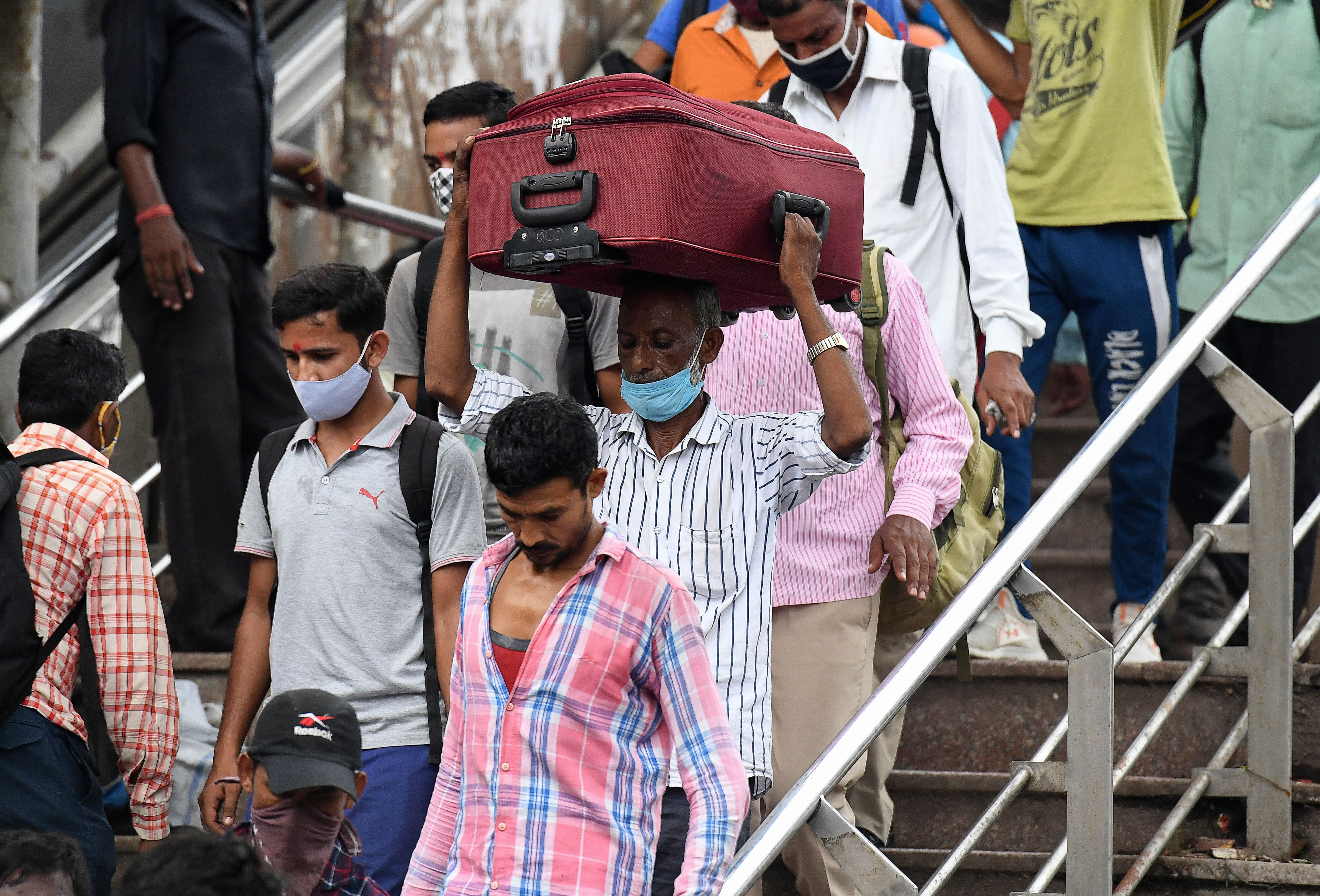While everyone in the world has been affected by the COVID-19 pandemic, people who travel far from home to find work – commonly called migrants – face additional burdens as their economic, legal, and social lives have been disrupted in two places at once.
An interdisciplinary team of researchers, including UConn professor of sociology and Asian and Asian American studies Bandana Purkayastha, is developing a set of research tools that will help understand the multiple dimensions of precarity faced by migrant workers, and to recommend ways that policymakers can ease those burdens. The two-year project is funded by the Social Science Research Council.
“This is an innovative interdisciplinary and multi-method toolkit,” says Soma Chaudhuri, associate professor of sociology from Michigan State University. “It’s something that has never been done before.”
For the project, the researchers will focus on two groups of migrant workers: Indian immigrants living in America, and migrants within India.
Indian Americans are the fastest-growing ethnic group in the US. Many – including those with highly specialized skills in technology, medicine, and other industries – come to the country on temporary work visas dependent on continued employment, putting these migrants in a vulnerable position when companies undergo large-scale layoffs, as they have during the pandemic.
In India, the challenges faced by migrant workers during the pandemic were highlighted by news reports in the spring showing tens of thousands of people walking hundreds of miles to their home villages, after a March 24 pandemic lockdown shut them out of jobs in distant cities and closed down public transport across the country. For hundreds, the journey proved fatal.
“These were haunting events for all of us, and that was the beginning of our conversation,” Purkayastha says.
The unique precarity facing migrant workers stems from them being rooted in more than one place. With COVID-19 making travel difficult, if not impossible, many are cut off from their loved ones and support systems.
“You can have your feet in two countries, two societies, two worlds and be connected transnationally across the world,” Elizabeth Chacko, a professor of geography at The George Washington University, says. “But with the pandemic, we’re coming to understand there are instances where physical presence really matters.”
Many migrants are unable to visit sick relatives or attend memorial services for those who have died in another country or state.
“You are in the state of an isolation bubble, where your normal social interactions are absolutely and totally interrupted,” Purkayastha says.
In order to understand the full picture, the research team includes experts in economics, history, geography, and sociology from both India and the US.
“It’s true teamwork between the global south and the global north,” says Chaudhuri.
One of the primary goals of the project is to identify which methods are most useful for studying migrant precarity during the current pandemic. They hope this work will allow others to leverage their findings and quickly mobilize research and policy efforts for future disasters.
“We really are putting our energy into looking at these methods, how to weave these across disciplines and levels of inquiry, to test these on the ground, and find out if there are things that need to be worked on to better reflect the state of knowledge in both countries,” Purkayastha says. “We hope other people don’t have to keep reinventing the wheel.”
The diversity of expertise in methodology in two countries will allow the researchers to gain insights that would be impossible using a singular discipline.
“We hope different methods will shine different beams of light on the question,” Chacko says.
They will collect data through interviews, life history calendars, media content analyses, and ZMET, a research method which asks respondents to select photos representing their emotions. This is especially useful for individuals with lower literacy skills.
The study will collect data about diverse migrant groups ranging from doctors to IT workers to construction and domestic workers.
“The goal for us is to gather data across different skill sets among migrants in the two countries,” Chaudhuri says.
Precarity has traditionally been defined as economic precarity, but there are many other dimensions to the phenomenon, including legal, social, and cultural aspects.
“We are looking at precarity as something that is multifaceted and not just something that is an economic issue,” Chacko says. “We want to make sure people understand high status doesn’t mean this population is immune from precarity.”
The group has already hosted its first virtual workshop in which they refined their research questions and learned about the different disciplinary approaches. The next stage will be to collect data. They will then develop a draft of the toolkit and refine it through their second workshop. The final workshop will include a presentation of the toolkit in India to an audience of academics, policy stakeholders, and the public. The team is also planning US-focused releases.
The toolkit will, in part, identify factors which could have mitigated precarity for these groups to inform future policy decision.
“Some findings will help policymakers, so it does have a much greater impact than just an article in a scholarly journal,” Chacko says.
This interdisciplinary, international effort showcases the power of collaborative research.
“The fact that people who did not know each other were able to come together was an absolute joy,” Purkayastha says. “You have strangers coming together for a project and you come away feeling fulfilled as human beings.”



